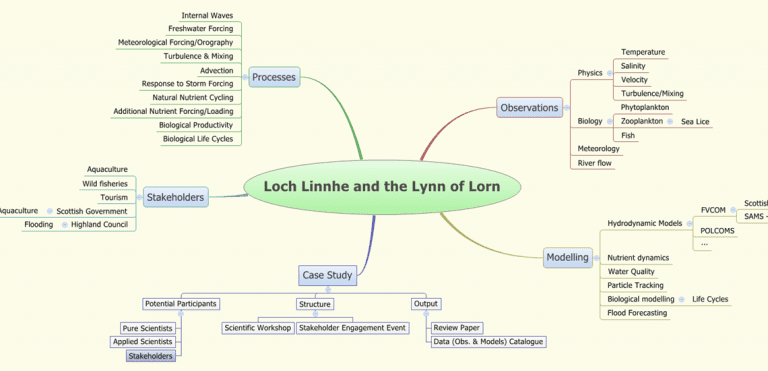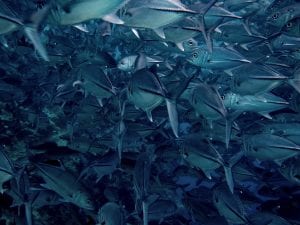Bee Berx (Marine Scotland Science) & Alan Hills (SEPA) prepared a proposal for a case study of the Loch Linnhe and Lynn of Lorn. A workshop was held in February 2014.
Loch Linnhe is one of the largest sea lochs on Scotland’s west coast: it covers 60 km in a SW-NE direction and experiences large freshwater inputs from the surrounding catchments. The general circulation of the loch has a fjordic characteristic; and in the SW, Loch Linnhe joins the sea at the Sound of Mull and Firth of Lorne. Within the loch, six side lochs connect to the main basin through shallow sills. The loch is a complex physical environment where interactions between meteorological forcing, freshwater input and sea bed topography complicate the circulation.
Over the past decades, the region has benefited from intense observations by many marine researchers within Scotland. This interest has mainly been driven by aquaculture production, with studies focusing on sea lice treatments, plankton ecology and relevant numerical modelling. Only a limited number of papers study the physical oceanography of the region. The region is however data rich with many studies collecting observations of circulation, temperature and salinity variability. To date, most analyses have focused on the upper loch, leaving the more complex main loch for further investigation. Hydrodynamic modelling of the system has also been pursued by a number of researchers and is currently an area of active development. However, the existing literature still lacks a complete description of the dynamics and variability of Loch Linnhe.
From a stakeholder perspective, flood forecasting and aquaculture-related topics remain of high importance. With the development of a community model under the Scottish Shelf Model project (commissioned by the Scottish Government), now is an ideal time to consider an integration of knowledge across the research fields: from physical oceanography to water quality and biology. Scottish Government has set ambitious targets for the expansion of both finfish and shellfish aquaculture across the country. It is therefore likely that the assessment of aquaculture potential and marine planning in the region will become important drivers for research.




